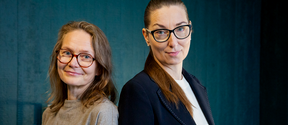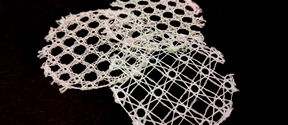Aalto University, the University of Helsinki and the Finnish Heritage Agency have been collaborating on a research project to develop the new FindSampo online service that is open to all and collects information on archaeological discoveries made by citizens, especially metal detector users, in Finland.
‘At the beginning of the project, in 2017, the greatest hope of metal detector users was to have a tool for reporting discoveries directly at the site of the discovery. In the project, we tested the mobile reporting service of FindSampo and received good feedback from metal detector users,’ says researcher Anna Wessman who has interviewed metal detector users and is now a professor at the University of Bergen in Norway.
Originally, archaeological discoveries were reported to the Finnish Heritage Agency using paper forms. In 2019, the Finnish Heritage Agency opened an electronic notification service, Ilppari.
‘Our goal is that in the future, information about discoveries reported to Ilppari could be available also in FindSampo. Until now, the discoveries reported have often remained within the walls of the Finnish Heritage Agency, but FindSampo allows us to open more doors and share information more easily. Everyone has a right to cultural heritage,’ Ville Rohiola, Curator in the Archaeological Collections in the Finnish Heritage Agency.
Now in it’s test phase, FindSampo contains information on thousands of discoveries made by citizens, and discoveries stored by the Finnish Heritage Agency in the archaeological catalogue application after 2015. Data analysis has been included in the service, for example, it is possible to visualise the data using maps. The location of a discovery is shown in FindSampo with an accuracy of a few metres, and the locations can be visualised on heat maps.
‘Map visualisations make it possible to see what kind of objects have been discovered e.g. around your own cottage,’ says Professor at Aalto University and Director of the Helsinki Centre for Digital Humanities (HELDIG) at the University of Helsinki Eero Hyvönen.
Abundance of discoveries made
FindSampo contains only part of the national discoveries of archaeological collections, as not all discoveries from recent years have yet been catalogued.
‘The cataloguing queue is based on the great popularity of the metal searching hobby and the continuous increase in the total number of discoveries,’ says Rohiola.
The material of FindSampo contains items such as money, weapons and dishes.
‘Money is interesting because it makes good digital research material. It is possible to pinpoint fairly accurately the era it is from, unlike with objects like stone axes. Money is also international, like the dirhem from the Viking era,’ says Hyvönen.
‘The most interesting part is how the discoveries all form a picture of history. For example, they can enrich the picture we have of the Vikings and Crusades,’ says Rohiola.
Finders keepers or property of the State?
Since 1963, there has been a law in force in Finland that states that relics over 100 years old belong to the State and must be reported and delivered to the Finnish Heritage Agency. The Agency decides whether or not to take an object into its collections.
‘For example, if there is a lot of money from the 19th century already in the collections, the Finnish Heritage Agency will only be interested in the location of the discovery, and the person who found the money may keep it. But if the Finnish Heritage Agency takes an object into its collections, the discoverer may request a compensation for redemption based on the object's informational value. An object discovered can also be donated to collections,’ says Rohiola.
The Antiquities Act, on the other hand, defines sites of historical and archaeological interest and areas that are protected. The exclusion areas around them are also shown in map visualisations.
‘People should not go to the same places of discovery, as a place may be protected after just one discovery,’ says Rohiola.
Most of the findings in archaeological collections originate from archaeological field studies, such as digs at areas containing relics. The aim is to be able to publish discoveries from both archaeological sites and civilians on FindSampo through digitalisation.
FindSampo complements the Sampo series launched 12 years ago, which is based on semantic web technologies and linked data. Of these, a total of two million people used BookSampo in 2020. The next ones to be launched are LawSampo, created in cooperation with the Ministry of Justice, along with ParliamentSampo, which brings together nearly one million speeches from Members of Parliament since 1907.
FindSampo will also be tested using the Portable Antiquities Scheme database, managed by the British Museum, with over a million users. It is intended to be used in the large European AriadnePlus project.
Further information:
Eero Hyvönen
Professor, Aalto University
Director, Helsinki Centre for Digital Humanities (HELDIG) at the University of Helsinki
eero.hyvonen@aalto.fi
tel. +358 50 384 1618
Ville Rohiola
Project Manager, Curator
Archaeological Collections, Finnish Heritage Agency
ville.rohiola@museovirasto.fi
tel. +358 295 33 6099
Suzie Thomas
Associate Professor, Cultural Heritage Studies
University of Helsinki
suzie.e.thomas@helsinki.fi
tel. +358 50 448 7450

















